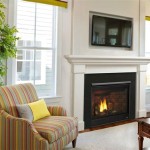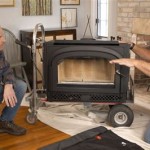How To Clean a Copper Fireplace Hood
A copper fireplace hood adds a touch of elegance and sophistication to any living space. However, due to its exposure to heat, smoke, and soot, a copper hood can quickly lose its luster and develop a dull, tarnished appearance. Regular cleaning and maintenance are essential to preserve its beauty and ensure its longevity. This article provides a comprehensive guide on how to effectively clean a copper fireplace hood, covering various methods and preventative measures.
Understanding Copper and Its Vulnerabilities
Copper is a highly reactive metal that readily oxidizes when exposed to air and moisture. This oxidation process creates a patina, a layer of copper oxide that changes the metal's color from a bright, shiny orange to a dull brown or even green. While some prefer the aged aesthetic of a patina, many homeowners prefer to retain the original luster of their copper fireplace hood. The rate of oxidation is accelerated by pollutants in the air, such as sulfur dioxide and particulate matter, which are commonly found near fireplaces.
The primary culprit in the soiling of a copper fireplace hood is soot. Soot is a byproduct of incomplete combustion and consists of fine particles of carbon, ash, and other substances. These particles readily adhere to the copper surface, creating a dark, greasy film. Over time, this film can become difficult to remove, especially if left unaddressed. Additionally, the heat from the fireplace can bake the soot onto the copper, making it even more challenging to clean.
Therefore, understanding the nature of copper and the factors that contribute to its tarnishing is crucial for selecting the appropriate cleaning methods and preventative measures.
Essential Cleaning Supplies and Safety Precautions
Before embarking on the cleaning process, it is essential to gather the necessary cleaning supplies and take appropriate safety precautions. The specific supplies needed will depend on the cleaning method chosen, but some common items include:
- Soft cloths or sponges: Microfiber cloths are ideal for gentle cleaning and polishing.
- Mild dish soap: A gentle dish soap is effective for removing grease and soot.
- Warm water: Warm water helps to dissolve dirt and grime.
- White vinegar: White vinegar is a natural acid that can help to remove tarnish.
- Lemon juice: Similar to vinegar, lemon juice contains citric acid that can dissolve tarnish.
- Baking soda: Baking soda is a mild abrasive that can help to scrub away stubborn stains.
- Copper cleaner: Commercial copper cleaners are specifically formulated to remove tarnish and restore shine.
- Soft-bristled brush: A soft-bristled brush can be used to gently scrub crevices and hard-to-reach areas.
- Gloves: Gloves protect your hands from cleaning solutions and potential irritants.
- Eye protection: Eye protection is recommended when using cleaning solutions that may splash or spray.
- Ladder or step stool: A ladder or step stool may be necessary to reach the top of the fireplace hood.
- Drop cloths or protective sheeting: Drop cloths or protective sheeting can protect the surrounding area from spills and splatters.
Safety precautions are paramount when cleaning a fireplace hood. The following precautions should be observed:
- Ensure the fireplace is completely cool before cleaning.
- Wear gloves and eye protection to protect yourself from cleaning solutions.
- Work in a well-ventilated area.
- Follow the manufacturer's instructions for any commercial cleaning products used.
- Test any cleaning solution on a small, inconspicuous area of the copper hood before applying it to the entire surface.
Cleaning Methods for a Copper Fireplace Hood
Several cleaning methods can effectively remove soot and tarnish from a copper fireplace hood. The choice of method will depend on the severity of the soiling and the desired level of shine. Here are some common and effective methods:
1. Soap and Water Cleaning
This is the gentlest cleaning method and is suitable for routine maintenance and light soiling. Mix a few drops of mild dish soap with warm water. Dip a soft cloth or sponge into the soapy water and gently wipe down the copper surface. Rinse the cloth or sponge frequently with clean water to remove any soap residue. After wiping the entire surface, dry it thoroughly with a clean, soft cloth.
This method is best for removing surface dust and light grease. It's a good starting point before attempting more aggressive cleaning methods. Regular use will help prevent the build-up of soot and tarnish.
2. Vinegar and Salt Paste
This method is effective for removing moderate tarnish. Create a paste by mixing equal parts of white vinegar and salt. Apply the paste to the copper surface and gently rub it in a circular motion using a soft cloth or sponge. The salt acts as a mild abrasive, while the vinegar helps to dissolve the tarnish. Rinse the surface thoroughly with clean water and dry it with a clean, soft cloth.
Be cautious when using this method, as the abrasive nature of the salt can scratch the copper if applied too vigorously. Always test the paste on a small, inconspicuous area first. For stubborn tarnish, allow the paste to sit on the surface for a few minutes before scrubbing. You can also use lemon juice and salt as an alternative to vinegar.
3. Baking Soda Paste
Baking soda is another effective mild abrasive that can be used to remove tarnish. Create a paste by mixing baking soda with water until it forms a thick consistency. Apply the paste to the copper surface and gently rub it in a circular motion using a soft cloth or sponge. Rinse the surface thoroughly with clean water and dry it with a clean, soft cloth. Baking soda is less acidic than vinegar or lemon juice, making it a gentler alternative.
This method is particularly useful for removing stubborn soot deposits. For heavily soiled areas, allow the paste to sit on the surface for up to 30 minutes before scrubbing. As with the vinegar and salt paste, test on a small, hidden area first and avoid applying excessive pressure during scrubbing.
4. Commercial Copper Cleaners
Commercial copper cleaners are specifically formulated to remove tarnish and restore shine to copper surfaces. These cleaners typically contain chemicals that dissolve the copper oxide and remove dirt and grime. When using a commercial copper cleaner, it is essential to follow the manufacturer's instructions carefully. Apply the cleaner to a soft cloth and gently rub it onto the copper surface. Rinse the surface thoroughly with clean water and dry it with a clean, soft cloth. Wear gloves and eye protection when using commercial copper cleaners, as some may contain harsh chemicals.
Different types of commercial cleaners are available, including liquid polishes, creams, and sprays. Choose a cleaner that is specifically designed for copper and that is appropriate for the level of tarnish on your fireplace hood. Always test the cleaner on a small, inconspicuous area before applying it to the entire surface. Some cleaners may leave a residue, so it is important to rinse the surface thoroughly after cleaning.
5. Tarn-X
Tarn-X is a readily available and effective chemical cleaner specifically designed for removing tarnish from various metals, including copper. Its effectiveness lies in its ability to dissolve the copper oxide layer. To use Tarn-X safely and effectively, ensure adequate ventilation in the work area. Apply a small amount of Tarn-X to a clean cloth and gently wipe the copper surface, avoiding prolonged contact or excessive rubbing. Monitor the cleaning process closely as Tarn-X can quickly remove tarnish. Once the desired level of cleanliness is achieved, immediately rinse the surface thoroughly with water to remove any residue. Dry the copper surface with a clean, soft cloth. As with all chemical cleaners, it is recommended to wear gloves and eye protection and to test the product on an inconspicuous area before full application.
Preventative Measures to Minimize Tarnish and Soot Buildup
In addition to regular cleaning, several preventative measures can help to minimize tarnish and soot buildup on a copper fireplace hood:
- Ensure proper ventilation: Proper ventilation in the fireplace area can help to reduce the amount of smoke and soot that comes into contact with the copper hood. Make sure the chimney is properly cleaned and maintained.
- Use seasoned firewood: Burning seasoned firewood produces less smoke and soot than burning unseasoned wood.
- Regularly wipe down the hood: Wiping down the hood with a damp cloth regularly can help to remove dust and soot before they accumulate and become difficult to remove.
- Apply a protective coating: Applying a protective coating, such as a lacquer or wax, can help to prevent tarnish and protect the copper surface from scratches and damage. Choose a coating that is specifically designed for copper and that is heat-resistant. Reapply the coating periodically as needed.
By implementing these preventative measures, you can significantly reduce the frequency and intensity of cleaning required to maintain the beauty of your copper fireplace hood.
Polishing for Enhanced Shine
After cleaning the copper fireplace hood, polishing can further enhance its shine and luster. Copper polishes contain fine abrasives that remove any remaining tarnish and smooth the surface, resulting in a brighter, more reflective finish. To polish the copper hood, apply a small amount of copper polish to a soft cloth and gently rub it onto the surface in a circular motion. Follow the manufacturer's instructions for the specific polish being used. After polishing, buff the surface with a clean, dry cloth to remove any polish residue and reveal the enhanced shine.
When selecting a copper polish, choose one that is specifically designed for copper and that does not contain harsh chemicals that could damage the metal. Always test the polish on a small, inconspicuous area before applying it to the entire surface. Polishing is not necessary after every cleaning, but it can be done periodically to maintain the shine of the copper hood.

How To Clean A Copper Range Hood Desert Oasis Cleaners Phoenix

Hammered Copper Fireplace Hood Surround And Hearth With Forged Steel Strapping For An Artist S Residence In Metal Craftsman Home

Copper Fire Canopy Fireplace Hood Ct C15 Rangehoodmaster

Copper Fire Canopy Fireplace Hood Ct C02a Rangehoodmaster

24 Gauge Steel Fireplace Hood Made To Custom Specifications

Copper Fire Canopy Fireplace Hood Ct C02a Rangehoodmaster

Canopies And Fire Hoods Camelot Fireplace Open

Copper Fire Canopy Fireplace Hood Ct C16 Rangehoodmaster

Copper Chimney T Canopy 50 00 Pic

Fireplace Hood Up To 48 Inch








